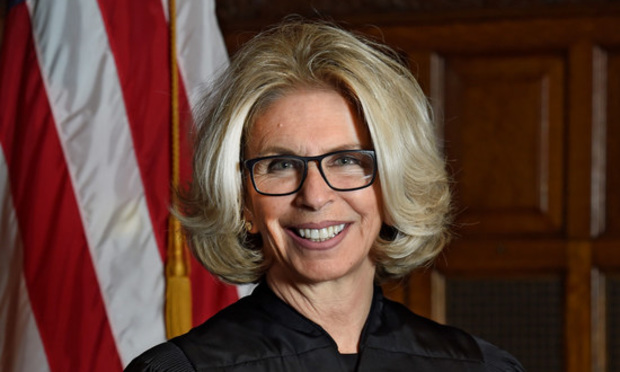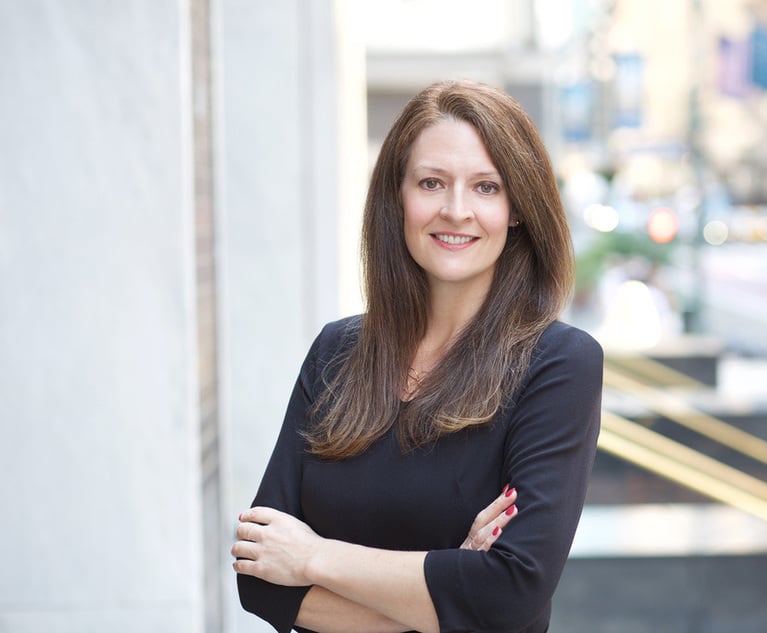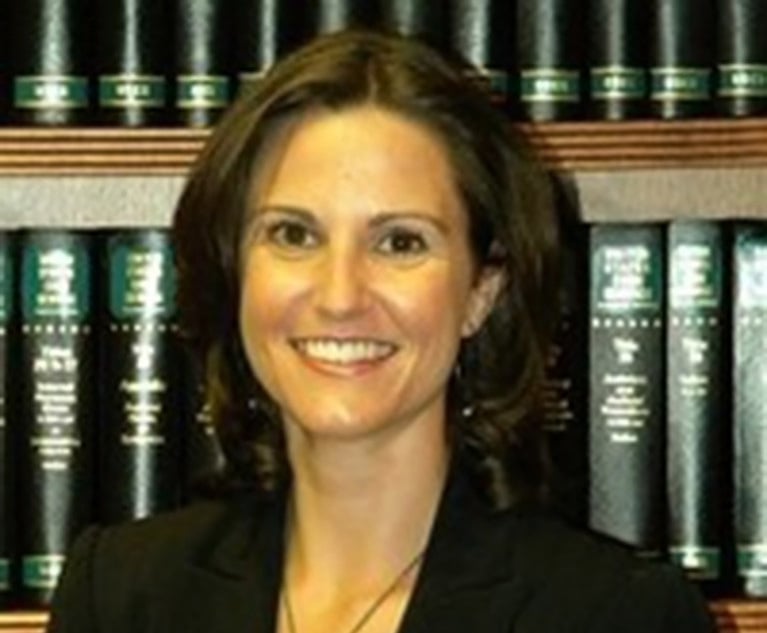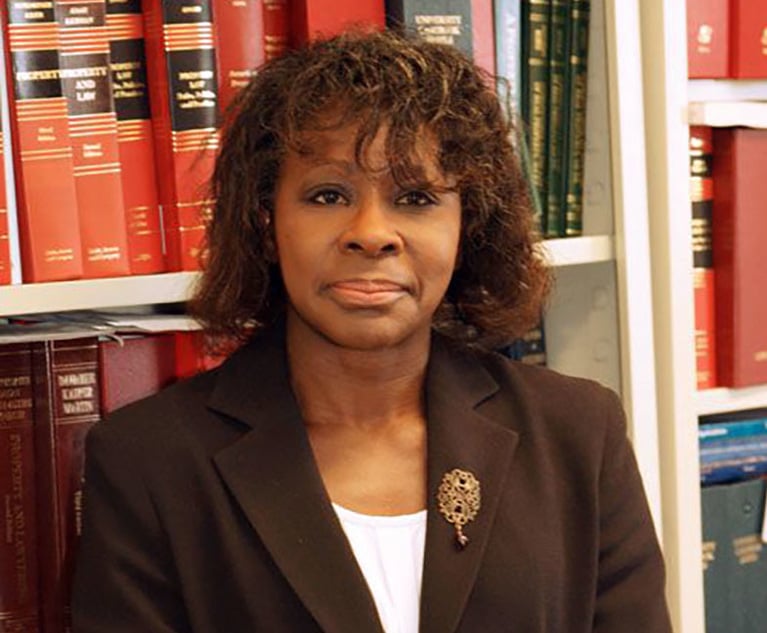The Perennial Challenge of Delivering Affordable and Accessible Justice
Janet DiFiore, Chief Judge of the State of New York, addresses one of the most serious challenges facing the Bar and Bench today: How can we make sure that every person gets their day in court? She writes: All of us, working together, have it in our power to keep our courthouse doors open and accessible for every person seeking his or her day in court.
January 11, 2019 at 11:30 AM
7 minute read
 Chief Judge Janet DiFiore
Chief Judge Janet DiFiore
For 142 years, the members of the New York State Bar Association have been coming together annually to address the evolving challenges facing our legal profession and our courts, including the perennial challenge of delivering timely, affordable and accessible justice services to the clients, litigants and members of the public we all serve.
The recurrent nature of this challenge was highlighted for me not long ago when a member of my staff salvaged some dusty old books being discarded as part of a court renovation project. One of them was a thick volume containing all 24 issues of the State Bar Bulletin for the years 1933-34. The March 1933 issue caught my eye—a speech given during State Bar Week by future Supreme Court Justice Robert H. Jackson, on a topic I find endlessly fascinating. The title of the speech? “Delayed Justice in New York State.”
Mr. Jackson was the State Bar's representative to the Commission on the Administration of Justice in New York State, created by the Legislature in 1931 in response to public complaints about congested state courts that in some places were up to four years behind in their work. According to Mr. Jackson, the Commission's charge was to make justice “cheap, simple and quick.” Nor did Mr. Jackson mince words in stating that the courthouse doors in New York had become “impassible,” and “jammed with long suffering suitors,” especially plaintiffs in automobile cases, a fast-growing caseload with which the Bench and Bar had yet to come to grips. (Address Before New York State Bar Association, NYSBA Bulletin, March 1933, pp. 117-127).
The Commission on which Jackson served was the genesis of two important institutions that improved the administration of justice in our State: the Law Revision Commission of New York State, now the oldest continuous agency in the common law world devoted to substantive law reform through legislation; and the Judicial Council of the State of New York, the first permanent body within our judicial branch dedicated to court management and the collection and publication of statistical data. Another salvaged tome contained the written proceedings of the 84th Annual Meeting of the State Bar Association, held in January 1961. My eye was drawn again to the transcript of a panel discussion titled “Court Congestion in Metropolitan New York,” featuring then-New York State Chief Judge Charles S. Desmond. Nearly 30 years after Jackson's Commission published its findings and recommendations, here was Chief Judge Desmond acknowledging “truly dreadful” delays of up to several years in some counties, attributable to explosive population growth and development in the outer boroughs and suburbs of New York City following World War II. (NYSBA, Proceedings of the 84th Annual Meeting, Jan. 25-28, 1961, pp. 32-47). In 1963, shortly after Chief Judge Desmond's panel discussion, New York adopted the CPLR, which helped alleviate congestion and long delays in Supreme Court through simplification of court procedure and jurisdiction.
Coincidentally, around the same time I was perusing those musty volumes, a colleague forwarded to me, this time in electronic form, an article from the New York Review of Books titled, “Why You Won't Get Your Day in Court.” According to the author, Senior U.S. District Court Judge Jed Rakoff: “Over the past few decades, ordinary U.S. citizens have increasingly been denied effective access to their courts.” While he identified at least eight distinct factors undermining access to justice for people of moderate means, for the sake of brevity I will comment only on the first two, which should be obvious to all of us: the ever growing cost of hiring a lawyer; and the increased expense, aside from legal fees, for a litigant to pursue a lawsuit to conclusion. (Jed S. Rakoff, New York Review of Books, Nov. 24, 2016). The six other factors identified are: fewer lawyers willing to take contingent-fee cases involving modest awards; decline in unions and institutions providing members with free legal representation; imposition of mandatory arbitration; judicial hostility to class action suits; diversion of legal disputes to regulatory agencies; and, in criminal cases, vastly increased risks of heavy penalties in going to trial.
As a court system, our first order of business must be to reduce court congestion and delay, which in themselves can constitute a denial of justice for litigants seeking redress for personal injuries; parties in matrimonial actions attempting to move forward with their lives; families and children needing protection and stability; and businesses, large and small, for whom litigation is a major cost of doing business. On the criminal side, court delay harms defendants, presumed innocent under the law, who often languish in jail while their families and communities suffer; prosecutors who watch cases grow stale as witnesses move away and memories fade; and crime victims whose suffering is amplified while waiting for justice to be done.
Beyond the individual harm is the broader loss of public confidence and respect for our courts, which weakens us institutionally and makes us easy targets for those who would undermine judicial independence and the rule of law for their own political or personal gain.
These were among the primary concerns that led me to announce the “Excellence Initiative” upon my investiture as Chief Judge in February 2016. While the objectives of the Excellence Initiative are to achieve and maintain operational and decisional excellence in our trial and appellate courts, the initial focus has been on eliminating case delays and backlogs and keeping our courts affordable and accessible for all New Yorkers.
Next month, I will deliver the third annual State of Our Judiciary Address and report publicly on the encouraging—in some places dramatic—progress we have made to speed the justice process and make our courts more efficient. As important, we will announce additional measures to build on this progress and upgrade the quality of our justice services across our entire court system, from our commitment to early mediation as a means of narrowing issues and promoting less costly dispositions in civil and family matters, to our work with the City of New York to implement legislation providing lawyers to tenants facing eviction in our Housing Courts.
The experiences and observations of Justice Jackson, Chief Judge Desmond and Judge Rakoff serve to confirm that our profession can never stand still when it comes to the administration of justice. History has shown how the approaches, practices and attitudes that served us well in the past are quickly outdated by the evolving needs of our clients and litigants. Each generation of judges and lawyers is challenged to examine our justice system with fresh eyes and devise updated solutions that respond to the modern needs and expectations of the people who depend on the Bar for justice, and who support our courts with their hard-earned tax dollars.
One of the most serious challenges facing the Bar and Bench today, so well elucidated by Judge Rakoff, is the same one that confronted Justice Jackson in 1933 and Chief Judge Desmond in 1961, and which has bedeviled humanity since biblical times: How can we make sure that every person gets their day in court?
While that challenge remains as daunting today as it ever was, I see reason for optimism in the steadfast support and generous pro bono contributions of the organized Bar, and NYSBA in particular; the hard work and commitment of our judges and court staff; and the good will and cooperation of our partners in government and our many justice stakeholders. All of us, working together, have it in our power to keep our courthouse doors open and accessible for every person seeking his or her day in court.
This content has been archived. It is available through our partners, LexisNexis® and Bloomberg Law.
To view this content, please continue to their sites.
Not a Lexis Subscriber?
Subscribe Now
Not a Bloomberg Law Subscriber?
Subscribe Now
NOT FOR REPRINT
© 2025 ALM Global, LLC, All Rights Reserved. Request academic re-use from www.copyright.com. All other uses, submit a request to [email protected]. For more information visit Asset & Logo Licensing.
You Might Like
View All


Trending Stories
- 1The New Rules of AI: Part 2—Designing and Implementing Governance Programs
- 2Plaintiffs Attorneys Awarded $113K on $1 Judgment in Noise Ordinance Dispute
- 3As Litigation Finance Industry Matures, Links With Insurance Tighten
- 4The Gold Standard: Remembering Judge Jeffrey Alker Meyer
- 5NJ Supreme Court Clarifies Affidavit of Merit Requirement for Doctor With Dual Specialties
Who Got The Work
J. Brugh Lower of Gibbons has entered an appearance for industrial equipment supplier Devco Corporation in a pending trademark infringement lawsuit. The suit, accusing the defendant of selling knock-off Graco products, was filed Dec. 18 in New Jersey District Court by Rivkin Radler on behalf of Graco Inc. and Graco Minnesota. The case, assigned to U.S. District Judge Zahid N. Quraishi, is 3:24-cv-11294, Graco Inc. et al v. Devco Corporation.
Who Got The Work
Rebecca Maller-Stein and Kent A. Yalowitz of Arnold & Porter Kaye Scholer have entered their appearances for Hanaco Venture Capital and its executives, Lior Prosor and David Frankel, in a pending securities lawsuit. The action, filed on Dec. 24 in New York Southern District Court by Zell, Aron & Co. on behalf of Goldeneye Advisors, accuses the defendants of negligently and fraudulently managing the plaintiff's $1 million investment. The case, assigned to U.S. District Judge Vernon S. Broderick, is 1:24-cv-09918, Goldeneye Advisors, LLC v. Hanaco Venture Capital, Ltd. et al.
Who Got The Work
Attorneys from A&O Shearman has stepped in as defense counsel for Toronto-Dominion Bank and other defendants in a pending securities class action. The suit, filed Dec. 11 in New York Southern District Court by Bleichmar Fonti & Auld, accuses the defendants of concealing the bank's 'pervasive' deficiencies in regards to its compliance with the Bank Secrecy Act and the quality of its anti-money laundering controls. The case, assigned to U.S. District Judge Arun Subramanian, is 1:24-cv-09445, Gonzalez v. The Toronto-Dominion Bank et al.
Who Got The Work
Crown Castle International, a Pennsylvania company providing shared communications infrastructure, has turned to Luke D. Wolf of Gordon Rees Scully Mansukhani to fend off a pending breach-of-contract lawsuit. The court action, filed Nov. 25 in Michigan Eastern District Court by Hooper Hathaway PC on behalf of The Town Residences LLC, accuses Crown Castle of failing to transfer approximately $30,000 in utility payments from T-Mobile in breach of a roof-top lease and assignment agreement. The case, assigned to U.S. District Judge Susan K. Declercq, is 2:24-cv-13131, The Town Residences LLC v. T-Mobile US, Inc. et al.
Who Got The Work
Wilfred P. Coronato and Daniel M. Schwartz of McCarter & English have stepped in as defense counsel to Electrolux Home Products Inc. in a pending product liability lawsuit. The court action, filed Nov. 26 in New York Eastern District Court by Poulos Lopiccolo PC and Nagel Rice LLP on behalf of David Stern, alleges that the defendant's refrigerators’ drawers and shelving repeatedly break and fall apart within months after purchase. The case, assigned to U.S. District Judge Joan M. Azrack, is 2:24-cv-08204, Stern v. Electrolux Home Products, Inc.
Featured Firms
Law Offices of Gary Martin Hays & Associates, P.C.
(470) 294-1674
Law Offices of Mark E. Salomone
(857) 444-6468
Smith & Hassler
(713) 739-1250







